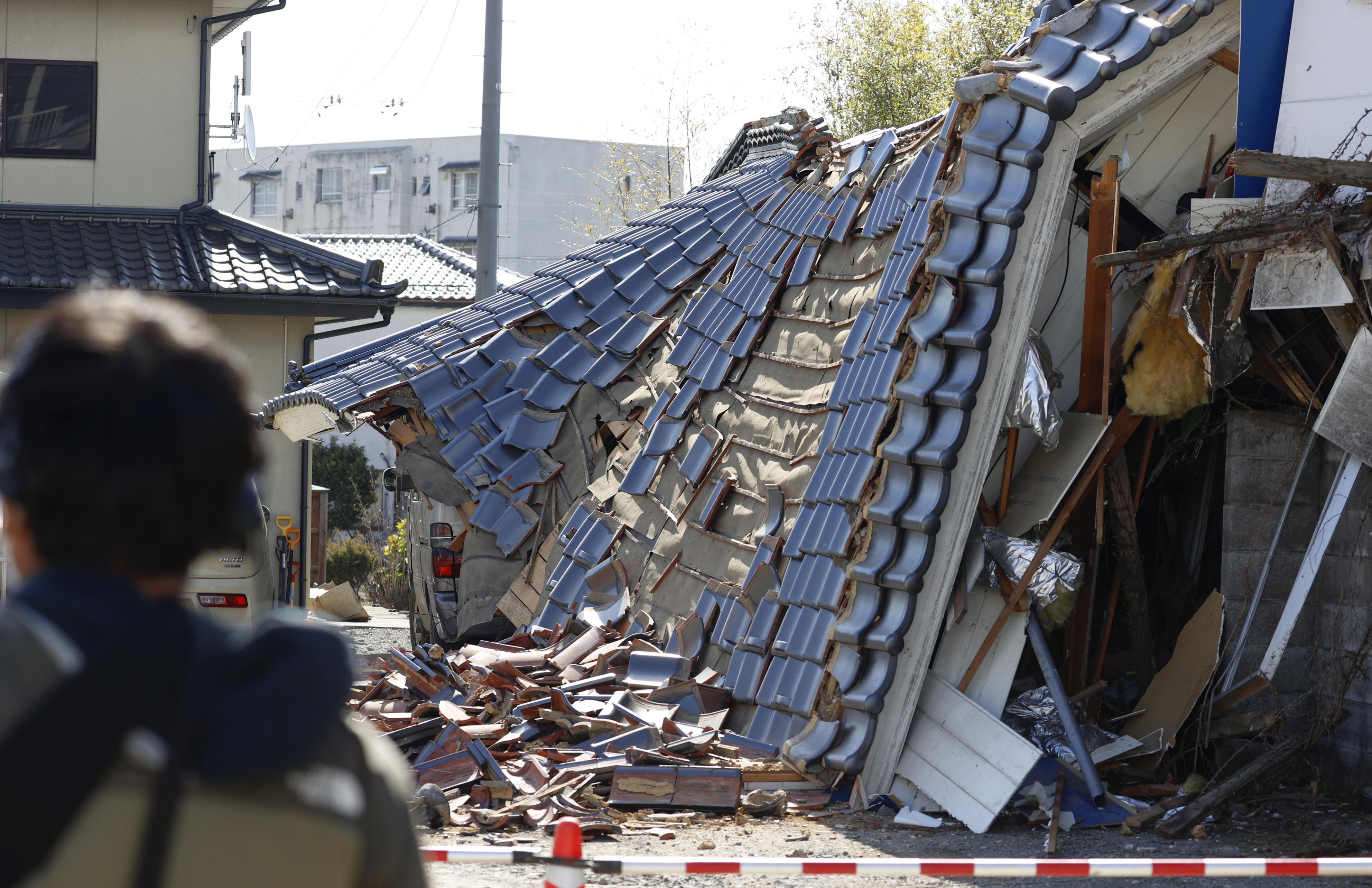ID :
624913
Thu, 03/17/2022 - 03:28
Auther :
Shortlink :
https://oananews.org//node/624913
The shortlink copeid
2 dead, dozens injured after M7.4 quake hits northeastern Japan

TOKYO, March 17 Kyodo - A powerful magnitude 7.4 earthquake hit off northeastern Japan late Wednesday, leaving at least two people dead and dozens injured and causing a high-speed shinkansen train to derail.
Two men in Miyagi and Fukushima prefectures, two areas hard-hit by the 11:36 p.m. quake, died, while a total of 92 people were reported injured by early Thursday across seven total prefectures, according to local authorities and the Fire and Disaster Management Agency.
The quake also prompted the Japan Meteorological Agency to issue a 1-meter tsunami warning to the Pacific coast of Miyagi and Fukushima prefectures, but the warning was lifted Thursday morning after only relatively small tsunami waves were observed.
Prime Minister Fumio Kishida told reporters early Thursday that there have so far been no abnormalities found at nuclear plants in affected areas.
The temblor, which came two minutes after a magnitude 6.1 quake, registered an upper 6 on Japan's seismic intensity scale of 7 in parts of Miyagi and Fukushima, the agency said.
At an intensity of upper 6, many people find it impossible to remain standing or move without crawling. The jolts are strong enough to toss people through the air, according to the agency.
The quake, which occurred in waters off Fukushima at a depth of about 57 kilometers, was also felt across a wide swath of the country. The agency is warning of quakes of a similar scale in hard-hit areas for the next week or so.
A Tohoku Shinkansen bullet train with about 100 passengers on board derailed between Fukushima Station and Shiroishizao Station, but no injuries were reported, according to JR East.
Fire departments in Miyagi and Fukushima received numerous calls requesting emergency assistance, while reports emerged of many people suffering injuries in the coastal city of Soma in Fukushima.
Injuries were reported in not just Miyagi and Fukushima but also Kanagawa, Ibaraki, Iwate, Akita, Tochigi and Yamagata prefectures, a Kyodo News tally showed.
The quake caused power outages in northeastern and eastern Japan, affecting a total of more than 2.2 million households, including about 700,000 in Tokyo, according to TEPCO Power Grid Inc. and Tohoku Electric Power Network Co. Power was later restored to most.
After the quake, tsunami waves of up to 30 centimeters were observed in the port of Ishinomaki in Miyagi, the agency said while also urging residents to stay away from the coast.
The country's nuclear regulator said data shows no abnormalities with reactors and facilities at the Fukushima Daiichi nuclear power plant, though a fire alarm went off in the turbine building of the No. 5 reactor.
The seaside plant suffered multiple meltdowns in March 2011 after being hit by a quake-caused tsunami, but the No. 5 reactor was unscathed.
The government set up a crisis management center at the prime minister's office. Kishida told reporters he instructed officials to gather relevant information and make the utmost effort to rescue the injured and respond to those affected by the quake.
The late-night quake left many Japanese, particularly those in northeastern Japan, unsettled as it struck just days after the 11th anniversary of the M9.0 quake that devastated the region.
"I felt two big quakes and saw parked cars bouncing up and down because the ground was shaking," a security guard at Soma City Hall said.
A security guard at Tagajo City Hall in Miyagi said the second jolt lasted nearly 1 minute.
Chief Cabinet Secretary Hirokazu Matsuno told a press conference early Thursday that no abnormalities were found at the Onagawa nuclear power plant in Miyagi Prefecture.
The quake's magnitude was initially announced as 7.3 but was later upgraded to 7.4.
==Kyodo





